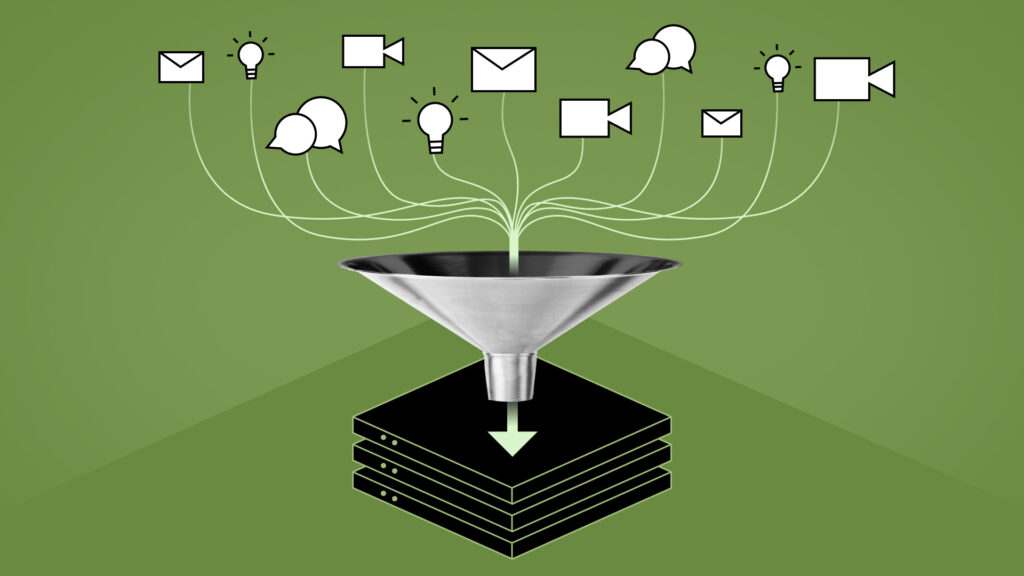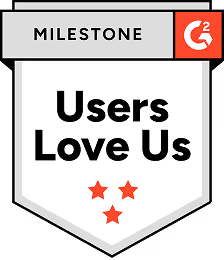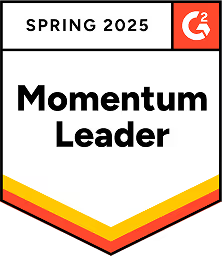Top Challenges in Sales Engagement and How to Solve Them

With every technological shift, the sales environment changes. It’s 2021 and our capabilities and tools are at a point they’ve never been before, but with change comes new challenges. While sales will never be problem-free, a recent report from Gartner (formerly TOPO) makes us at Regie think we can get you pretty darn close.

The report surveyed 100 sales and marketing leaders at companies with a median annual contract value ranging from $75,000 to $125,000. Of the respondents, 64% were director level or above. The survey questions focused on sales engagement marketing, a relatively new but increasingly necessary facet of selling.
Sales engagement marketing refers to the interactions involved throughout the sales cycle between a rep and their prospect. The aim of sales engagement marketing is to heighten the quality of those interactions to encourage greater conversions.
The survey checked for top sales engagement challenges and factors for sales engagement success.
The Challenge: Content Strategy
According to 41% of the survey’s respondents, their top challenge is content strategy. A formal definition of content strategy is the preparation, production and handling of content, which is no different than saying, it’s how you create and use content.

More important than the definition of content strategy is understanding how you should develop yours. It’s not easy. The difficulty lies in shaping your content to fit your business goals without losing sight of your audience, who, by the way, should be clearly defined.
This is where marketing research data is useful, but not every team has access to or the capability to support the breadth of data necessary. However, it is a game changer. Especially for unearthing the optimal channels for reaching your prospects.
An omni-channel content strategy is now the market standard, so many companies are considering experimentation with new channels altogether. Remember that each buyer-persona will need their own campaign, which should account for channels, tone, cadence and content optimized for their preferences.
After you’ve gotten through development, soon enough it’ll be time to analyze your content strategy and improve it. The process sort of starts over again, but this time with testing. This is why determining metrics for success is a must.
It’s all too easy to overlook the hindrances within your content strategy, so you’ll need warning signs in place when it comes time for improving it.
There’s a reason this is the number one challenge. Content strategies are by no means low-maintenance. The amount of content alone that they require can be daunting, but the scalability of your campaigns depends upon a content-rich toolbox.
The Challenge: Partnering with Marketing
The report’s second most common challenge is partnering with marketing. Accomplishing a symbiotic relationship between the phases of content creation and actual usage requires more thought than one might initially expect. This is reflected in the survey data, with 26% of respondents citing partnering with marketing as their top challenge.
As the Gartner report puts it, “Sellers lack the infrastructure and experience to create messaging at scale and in an optimizable fashion, leading to disorganized content libraries, ineffective and unchecked content and poor buyer experiences.”

Because content creation is so time-consuming, teams have every incentive to maximize its potential for conversions once it’s ready for use. But the report indicates that companies are experiencing hurdles on both ends of sales engagement.
There’s an apparent gap between planning and execution. Most teams use a CRM to manage their sales relationships, but this isn’t enough to dictate a workflow for creating content all the way through to use case and cadence, especially in an efficient, leakproof, and well-defined way.
A rep in need of content can go rogue and create their own marketing collateral, but doing so detracts from the core functions of their role while leaving the content’s quality unchecked and unusable for large-scale analysis.
And reps aren’t likely to have time for their own analysis either. Creating content, using it and monitoring it is a hefty task, one that frequently leaves follow-ups overlooked and deficiencies unreconciled.
Providing sales engagement content to a rep is no easier. What is the best way to disseminate the new content to the sellers?
Shared Google docs? Emails? Meetings with powerpoints? Pamphlets? How can the roadmaps for each piece of content be made clear? How are buyer-personas best indicated? What about updates or modifications to the content?
These are the questions companies are asking themselves, which leads us to the third most common challenge in the survey.
The Challenge: Effective Sales Engagement Playbook
25% of the survey’s respondents cited an effective sales engagement playbook as their top challenge. A playbook includes the resources and approaches that reps might use at various points throughout the buyer journey.
Something like, ‘after the initial email, we follow-up at this time using this channel.’

Without a platform that allows reps to use pre-built campaigns, a playbook is necessary. However, they’re tedious to update and are often filled with far too much non-specific content, which can end up deterring reps from actually using them.
Ultimately playbooks are like handing a rep instructions on how to sell rather than a tool for selling. This makes creating an effective playbook quite the challenge.
What Does it All Mean?
What’s interesting about the report’s top challenges is that the lines between each of them are blurred. Rather than three mutually exclusive sets of problems, we have three codependent challenges.
What does this mean?
It means that to resolve one challenge, companies must resolve all three. The solution requires unison. Consider the common theme of the challenges. What each of them lacks is a sales engagement platform for its corresponding processes to occur.
Without the infrastructure to support each of the steps and considerations listed above, companies are either tasked with creating entirely new systems across departments or are forced to continue doing the best they can.
Feeling like the report is a downer? Let’s take a quick break from the challenges of today and turn back the clock. There’s reason to be optimistic; just look at what we used to worry about.
Blast from the Past: A Look Back at Top Sales Challenges of Yesteryear
- 2019 - Meeting the demand for higher volumes of content.
- 2018 - Lack of formal processes for commercializing innovations.
- 2017 - Creating a persona-targeted strategy.
- 2016 - Finding ways to determine relevant value for specific stakeholders.
- 2015 - Quantity of leads.
So maybe it’s true, the more things change the more they stay the same. But there’s still reason to be optimistic. Keep reading to hear how today’s challenges are no biggie with Regie.
The Solution is Closer Than You Think
Challenges are no fun. Unless you’re a D personality (that’s a DISC joke). We’d rather focus on something much more satisfying. The solutions.

In this case, it’s just a single solution.
Regie quite literally is a content strategy that partners with marketing to form a built-in playbook. We’ve gone head to head with these challenges and taken care of them for you.
From 1.8 billion rows of sales engagement data, we’ve created persona-specific (that’s industry, title, value proposition and pain point) campaigns from start to finish, complete with optimized timing and cadence. What’s more, the content within them is designed to address prospects with the proper voice and tonality.
Initial touchpoints, follow-ups, meeting recaps, every step of the content strategy and sales process is ready to go.
Creating a campaign with Regie takes minutes, and the personas, pain points and value propositions you already love to use can be integrated into our platform alongside our content. Moreover, every piece of our content has a clearly defined use case and order of operations, so scalability is not a challenge.
Neither is personalization, which usually comes at the cost of scale. Within a Regie campaign, high-impact areas for customization are indicated, so our customers can personalize messages specifically for the lead they’re trying to reach.
We can’t know your business goals quite like you do. But we do know how to provide the infrastructure you need to achieve them. Regie helps companies execute ideas when they have them and provides a foundation to fall back on when they don’t.
The onus of content creation and management is moved off of you and onto us, so you can rely on your ideas when you’re feeling inspired or let us take the wheel when you’re not.
And with Regie, the gap between content creation and marketing is bridged within a single platform. A centralized hub means users gain much-needed visibility, providing greater control over content strategy.
How else does Regie address challenges? Best practices in workflows are standardized by removing the guesswork behind structuring touchpoint patterns and their content. And sequences are easily socialized internally. When all of your sales-approved marketing assets are housed in one place, quality control is not only guaranteed, the integration process for reps is streamlined as well.
Administrators create campaigns for the team, allowing reps to easily see the steps, tools and resources involved in the cadence they’re using. Since the entire buyer journey is planned out, nothing gets left behind or misused. Administrators simply set permissions for access and building, and the team is ready to go.
Sales reps can easily modify a campaign’s content to address their prospects personally without creating content from scratch or experience confusion over the proper next step in the cadence.
And the content reps use and reference will always be up to date because administrators can make standardized changes to campaigns in minutes. We also routinely refresh our content at Regie and encourage our clients to do so when their campaigns risk becoming stale.
We promise that refreshing a campaign has never been this easy either. Regie users can refresh campaigns with the click of a button.
These are just the solutions Regie has for the report’s top challenges. If you’d like to know more about what we do, request a demo here.
Top Solutions for Sales Engagement
Gartner’s report isn’t all about challenges, or Regie for that matter. It also specifies sales engagement factors for success within high-performing companies.

Some examples include:
- Automation - With 40% of respondents citing sales automation tools as a factor for success, it's the survey’s leading response. Companies use automation to execute their sales engagement strategy, collect data and address routine or manual tasks like scheduling meetings.
- Personalized Messaging - Right behind automation as a factor for success is personalized messaging. Gartner notes that “The presence of personalized messaging from 35% of respondents seems at odds with automation, but this dichotomy is precisely why a sales engagement strategy is so effective.”
- Ability to test and optimize quickly - 15% of respondents cited the importance of testing their sales engagement strategy in a timely manner. This helps companies gather insights into what’s working and what just needs work.
Sales Automation? We’ve Got It.
Regie folds automation into our campaigns to save our customers time. Using a tiered approach, we automate more or less of a campaign depending on the buyer persona it's built for and the volume of the campaign itself. This gets around the automation versus customization struggle and prioritizes your leads above all.
Personalized Messaging? We Support It.
Personalized messages improve success metrics related to conversions, so every piece of content in Regie is customizable. Similar to our approach to automation, a campaign’s suggested personalization level is dependent on its buyer persona. Some of our sequences even recommend adding research to the message, indicating where to get the information and where it should be used in the body copy for the most impact. Additionally, customers have the option to add in their own personalized value propositions and pain points.
Speedy Testing? Always.
Testing is never over. At Regie, we bring the testing phase down to 2-3 weeks because you should always be testing but not at the expense of your role’s core functions. We run what we call AZ testing, testing an entire campaign, to determine the winning approach for your team.
Then we move onto AB testing to perfect it. Testing at scale means the ability to supplement your own data and refresh your content marketing strategy with insights. Our structures themselves have been tested thousands of times and we continue to test them today.
Final Thoughts
There’s something exciting about imagining the challenges that future reports and surveys will highlight. If the history of sales indicates what’s to come, it’s probably a safe bet to guess that whatever is in store, new solutions won’t be far behind. But for now, today’s challenges are what’s certain. Keep Regie in mind while you pursue their solutions.
FAQs
Read more posts
View all BlogsNeed more help?
If you still have questions, make sure to check out our Help Center: there, you'll find all the tips & advice you'll need to get your team up & running with Regie.ai.









